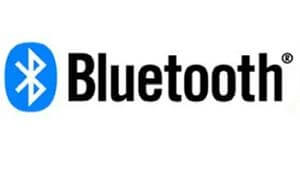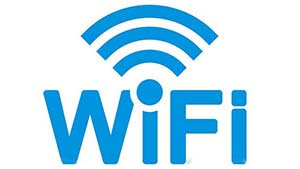What are the IoT protocols and standards? Why are they so important?
The number and reach of IoT are expanding rapidly, with research reporting that the number of IoT connections will exceed the number of non-IoT online connections for the first time in 2020. The availability and expansion of IoT protocols and standards, including 5G and low-power WANs, are driving and supporting much of this growth.
Why are IoT protocols and standards important?
The benefit and value of IoT come from enabling components to communicate; this ability to communicate is what moves data from endpoint devices through the IoT pipeline to a central server.
This communication takes place through the IoT protocol, ensuring that the next and subsequent steps in the connected environment receive and understand the data sent from an endpoint device (e.g. a sensor), whether that data is next sent to another endpoint device or a gateway or application.
IoT protocols and standards are as important to the existence of the IoT as the things themselves.
While protocols as a collective are essential to making the IoT work, protocols are not born equal. Industry experts say that not all protocols will work or work well in every situation. Some protocols apply to IoT use in buildings, some apply to IoT deployments between buildings, and others apply to national or global IoT use cases.
How many protocols are there in the IoT?
There are multiple IoT protocols available, each offering some combination of functionality or features that make them superior to other options for a particular IoT deployment.
Each IoT protocol supports device-to-device, device-to-gateway or device-to-cloud, or data center communications – or a combination of these.
Factors such as geographic and special locations, power requirements, battery-powered options, the presence of physical barriers, and cost determine which protocol is best for an IoT deployment.
What are the different layers of IoT architecture?
There are multiple IoT protocols available, each offering some combination of functionality or features that make them superior to other options for a particular IoT deployment.
Each IoT protocol supports device-to-device, device-to-gateway or device-to-cloud, or data center communications – or a combination of these.
Factors such as geographic and special locations, power requirements, battery-powered options, the presence of physical barriers, and cost determine which protocol is best for an IoT deployment.
What are the different layers of IoT architecture?
Network systems are built as technology stacks; these are often visualized in a reference model (a framework) that technicians use to conceptualize how data will be communicated across the stack.
The best known is the Open Systems Interconnection (OSI) model, which lists seven layers. From bottom to top, the layers are as follows.
◆ Physical
◆ Data links
◆ Network
◆ Transport
◆ Meetings
◆ Presentation
◆ Applications
The Internet of Things is also represented in a multi-layer model. While some use the OSI seven-layer model, others use
◆ Three-layer model: sensing, network, and application
◆ Four-layer model: sensing, support, network, and application
◆ Five-layer model: sensing, transport, processing, application, and service, or physical, data link, network, transport, and application
The protocols used usually vary from layer to layer. Thus, the IoT ecosystem can have multiple protocols, with different protocols supporting communication at different layers and some protocols bridging across layers. For example, Bluetooth and wireless support communication at the lowest layer, while Data Distribution Services (DDS) and MQTT work at the application layer.
The most common 12 IoT protocols and standards
When building a network to serve their IoT ecosystem, technicians can choose from a wide range of communication protocols. The most common ones include the following.
1. AMQP in IoT protocols and standards
AMQP stands for Advanced Message Queuing Protocol and is an open standard protocol for more message-oriented middleware.
It allows interoperability of messaging between systems, regardless of the messaging agent or platform used. It provides security and interoperability as well as reliability, even over long distances or on poor networks. It supports communication even when systems are not available at the same time.
2. Bluetooth and BLE in IoT protocols and standards

Bluetooth is a short-range wireless technology that uses short-wave UHF radio waves. It is most commonly used for audio streaming, but it has also become an important enabler for wireless and connected devices. As such, this low-power, low-range connectivity option is the preferred choice for personal LAN and IoT deployments.
Another option is low-power Bluetooth, known as Bluetooth LE or BLE, which is a new version optimized for IoT connectivity. As the name suggests, BLE consumes less power than standard Bluetooth, which makes it particularly attractive for many use cases, such as health and fitness trackers and smart home devices on the consumer side and in-store navigation on the business side.
3. Cellular in IoT protocols and standards
Cellular is one of the most widely available and well-known options for IoT applications, and it is one of the best options for deployments with longer communication ranges.
While 2G and 3G legacy cellular standards are now being phased out, telecom companies are rapidly expanding the coverage of newer, high-speed standards, namely 4G/LTE and 5G.
Cellular provides high bandwidth and reliable communications. It is capable of sending large amounts of data, an important feature in many IoT deployments. However, these features come at a price: higher cost and power consumption than other options.
4. Collaboration in IoT protocols and standards
The IETF Working Group on Restricted RESTful Environments introduced CoAP in 2013 for the Restricted Application Protocol, designing it for use with HTTP-based IoT systems.
CoAP relies on user datagram protocols to establish secure communication and enable data transfer between multiple points and is typically used for machine-to-machine (M2M) applications to enable constrained devices to join the IoT environment even in the presence of low bandwidth, low availability, and/or low energy devices.
5. DDS in IoT protocols and standards
The Object Management Group (OMG) has developed Data Distribution Services for real-time systems. The OMG describes DDS as a middleware protocol and API standard for data-centric connectivity and explains that it integrates the components of a system to provide the low-latency data connectivity, extremely high reliability, and scalable architecture that business and mission-critical IoT applications require.
This M2M standard uses a publish-subscribe model to enable high performance and highly scalable real-time data exchange.
6. LoRa and LoRaWAN in IoT protocols and standards

Lora, or long-range, is a non-cellular wireless technology that, as its name describes, provides remote communication capabilities. It provides low power consumption for secure data transmission for M2M applications and IoT deployments.
As a proprietary technology, it is now part of Semtech’s RF platform. the LoRa Alliance, of which Semtech is a founding member, is now the governing body for LoRa technology.
The LoRa Alliance also designs and maintains LoRaWAN, an open cloud-based protocol that enables devices to communicate with LoRa.
7. LWM2M in IoT protocols and standards
OMA SpecWorks describes its Lightweight M2M (LWM2M) as a device management protocol designed for the needs of sensor networks and M2M environments.
The communication protocol is designed for remote device management and telemetry in IoT environments and other M2M applications; it is a good choice for low-power devices with limited processing and storage capacity.
8. MQTT in IoT protocols and standards
Developed in 1999 and originally known as Message Queuing Telemetry Transport, it is now simply MQTT. there is no longer any queuing of messages in the protocol.
MQTT uses a publish-subscribe architecture to implement M2M communications. Its simple messaging protocol is suitable for constrained devices and supports communication between multiple devices.
It is designed to work in low bandwidth situations, for example for sensors and mobile devices on unreliable networks.
This functionality makes it a commonly preferred option for connecting devices with small code footprints and for wireless networks with varying latency levels due to bandwidth limitations or unreliable connections.
Originally a proprietary protocol, MQTT is now the leading open-source protocol device for connecting IoT and industrial IoT.
9. Wi-Fi in IoT protocols and standards

Wi-Fi is a commonly used IoT protocol given its common use in homes, and commercial and industrial buildings. It offers fast data transmission and is capable of handling large amounts of data.
Wi-Fi is particularly suitable for LAN environments over short to medium distances. In addition, there are multiple standards for Wi-Fi. The most common in homes and some businesses is 802.11n, which provides deployment options for technicians.
Many Wi-Fi standards, including those commonly used in the home, are too power-hungry for some IoT use cases, especially for low-power/battery-powered devices. This limits Wi-Fi as an option for some deployments.
Wi-Fi’s low coverage and low scalability also limit its viability for use in many IoT deployments.
10. XMPP in IoT protocols and standards
Dating back to the early 2000s when the Jabber open-source community first designed the Extensible Messaging and Online State Protocol (XMPP) for real-time person-to-person communication, XMPP is now used for M2M communication and routing XML data in lightweight middleware.
XMPP supports the real-time exchange of structured but scalable data between multiple entities on a network and is most commonly used in consumer-facing IoT deployments, such as smart devices. It is an open-source protocol supported by the XMPP Standards Foundation.
11. Zigbee in IoT protocols and standards
Zigbee is a mesh networking protocol designed for building and home automation applications and is one of the most popular mesh protocols in the IoT environment.
Zigbee is a short-range and low-power protocol that can be used to extend communication between multiple devices. It has a longer range than BLE, but lower data rates than BLE. It is overseen by the Zigbee Alliance and offers a flexible self-organizing mesh, ultra-low power consumption, and a library of applications.
12. Z-Wave in IoT protocols and standards
Another proprietary option Z-Wave is a wireless mesh network communication protocol based on low-power RF technology.
Like Bluetooth and Wi-Fi, Z-Wave allows smart devices to communicate via encryption, thus providing a level of security for IoT deployments. It is commonly used in home automation products and security systems, as well as commercial applications such as energy management technology.
Z-Wave operates on the 908.42 MHz radiofrequency in the United States; however, its frequency varies by country/region. z-Wave is supported by the Z-Wave Alliance, a consortium of members working to expand the technology and interoperability of devices that use Z-Wave.
How to choose the right IoT protocols and standards?
No one communication protocol is best, and no one protocol is right for every deployment.
Enterprise technicians must determine which protocol is best for their organization based on the unique circumstances of their planned IoT deployment.
These decisions should weigh a range of factors, from the power requirements of connected devices and the location of those devices geographic size and functionality of where the deployment is located, to the security requirements of the deployment.
5 key points about the IoT protocols and standards
At present, the number of global Internet of Things connection is 12.2 billion. This is the power of the Internet of Things. Numerous connected devices communicate with each other and generate meaningful data. But the connection is not enough to communicate the device. They need to speak the same “language”.
The IoT protocols and standards are a set of rules that enable different machine/equipment in the network settings to perform effective communication (that is, data exchange).
IoT protocols and standards #1: There is no universal IoT agreement.
There are no undisputed standard IoT protocols and standards today. This is the complexity of this topic. The Internet of Things market, as a whole, is fragmented, and the Internet of Things agreement is no exception. No global standards.
Some IoT protocols and standards occupy a dominant position in a specific industry.
However, for most projects, the choice of agreement can determine the success or failure of a suitable network, so many requirements need to be considered. For example, MQTT and NB-IoT (LPWAN standards) are compatible and can work together in a stable network.
The scope of narrowing, people can recognize the huge “ecosystem”, and the IoT protocols and standards are part of it.
The prospects of IoT protocols and standards may be quite daunting. It involves multiple layers that need to be compatible. The communication protocol layer (for example, connection, link, transmission, session) only constitutes the foundation of the environment.
Above them are data processing (such as Kafka, and RAPIDMQ), storage (such as MongoDB), and corresponding applications (such as machine vision and asset management).
IoT protocols and standards #2: IoT protocols and standards are more and more adopted by more and more people.
The connection share that uses a customized protocol for the Internet of Things is expected to increase by 11% in the next two years. MQTT and Coap are protocols leading this growth.
Both meet the requirements of the Internet of Things in all aspects. They are lightweight (low energy consumption is crucial for battery power supply equipment), low overhead (smaller message size), and can work in a loss-consuming network (many IoT devices such as sensors can be part of remote settings).
For the connection between assets/equipment to middleware, the connection share of MQTT is expected to increase by 29% during this period. However, between middleware and applications, Coap is the fastest-growing IoT agreement, which will increase by +30% in the next two years.
AMQP should also be mentioned here, which is another necessary IoT protocol and standard that is rising, showing the overall growth of these two types of connection types.
IoT protocols and standards #3: Software is becoming more and more important for IoT protocols and standards.
The rise of the Internet of Things agreement increases the importance of software as part of the connection settings. 10 to 15 years ago, the connection pattern was much simpler. Most projects are completed internally (including analysis and visualization). At the same time, new software managed this connection appeared.
The IoT platform, agency, protocol converter, and other tools such as such middleware are part of the completion of the connection problem.
IoT protocols and standards #4: "Easy to use" and "reliability" are the most important factor when choosing a new IoT protocol.
It is important to find the correct IoT protocols and standards suitable for each project. For example, MQTT is more concentrated, and it is more suitable for low bandwidth and remote locations. In contrast, DDS is decentralized, with richer functions, and can adapt to high-performance networks. Therefore, it is necessary to compare the potential IoT protocols and standards and their attributes.
According to research on the Internet of Things, the ease of use of the agreement is the most influential factor in the implementation. Different industries, regions, and companies give each agreement with different values of different protocols; therefore, many models can be found.
For example, the interoperability and scalability of other protocols are more important for larger companies, and the ease of use of the development operating system is more important for small and medium-sized companies.
IoT protocols and standards #5: The decision -making of the IoT protocols and standards has become a job of multi -interest related parties.
These characteristics will affect the decision -making process and be conducive to specific protocols. Decision makers must evaluate them in detail.
Determining the IoT protocols and standards is a difficult task involving many stakeholders.
IoT protocols and standards increase
The rise of the Internet of Things has brought fundamental changes to the communication methods between devices. As the number of connected devices increases, the use and importance of the IoT protocols and standards will only increase. The user’s responsibility is to make a plan and determine the most suitable IoT protocols and standards to prevent unnecessary digital Babylon.
Besides the 12 Common IoT Protocols and Standards article, you may also be interested in the below articles.
LTE vs. 5G: Is 5G better than LTE




